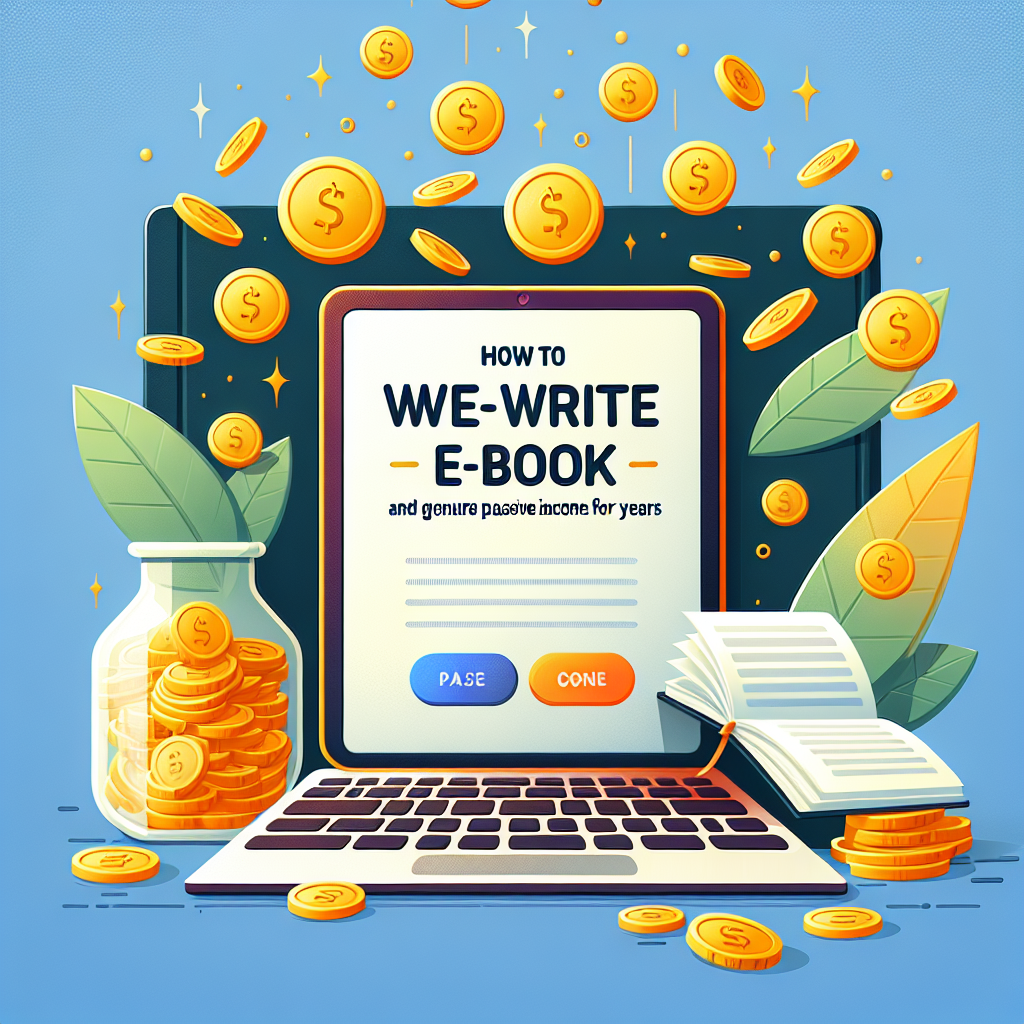In the digital age, writing an e-book has become one of the most accessible and profitable avenues for generating passive income. With the right approach, your e-book can continue to earn royalties long after you hit "publish." In this guide, we will explore how to write an e-book and turn it into a steady source of income.
Understanding Passive Income
What is Passive Income?
Passive income is money earned with minimal effort required post-initial investment. In the case of an e-book, once it is written and published, it can continue to generate revenue through sales for years without significant ongoing effort.
Why Choose E-Books for Passive Income?
E-books offer the advantages of low production costs, the ability to reach a global audience, and the potential for consistent royalties. Unlike physical books, e-books require no printing, shipping, or inventory management.
Step 1: Choosing the Right Topic
Identify Your Niche
Before you begin writing, it’s crucial to choose a niche that interests you and has a viable market. Conduct market research to identify popular topics, trends, and audience pain points. Use tools like Google Trends, Amazon Best Sellers, or keyword research tools to find niches with high demand.
Evaluate Competition
Examine existing e-books in your chosen niche. This will help you identify gaps or underserved areas that you could fill with your content. Look for areas where you can add unique value or a fresh perspective.
Step 2: Outlining Your E-Book
Create a Detailed Outline
A robust outline serves as the backbone of your e-book. Break it down into chapters and sections, ensuring you cover all critical aspects of your chosen topic. This will provide a structured roadmap and keep your writing focused.
Incorporate Keywords for SEO
To enhance the discoverability of your e-book, integrate relevant keywords throughout your outline. Think about what potential readers might search for, and include these terms to optimize your content for search engines.
Step 3: Writing Your E-Book
Set a Writing Schedule
Consistency is key to writing an e-book. Set a daily or weekly word count goal and stick to a writing schedule. Whether it’s 500 words a day or a few pages a week, regular progress will lead you to completion.
Edit and Revise
Once you finish your draft, the editing process begins. Consider hiring a professional editor to refine your work and ensure grammatical accuracy. Tighten your prose and clarify your ideas to enhance the reader’s experience.
Step 4: Designing Your E-Book
Create an Eye-Catching Cover
Your e-book cover is the first impression potential readers will have. Invest time and effort in designing a professional and appealing cover that reflects your content. Use tools like Canva or hire a designer on platforms like Fiverr or Upwork.
Format for Multiple Platforms
Ensure your e-book is correctly formatted for various platforms (e.g., Kindle, PDF, ePub). Use formatting tools or hire a professional to ensure compatibility across devices.
Step 5: Publishing Your E-Book
Choose the Right Platform
Decide where you want to publish your e-book. Popular options include Amazon Kindle Direct Publishing (KDP), Smashwords, and self-hosting on your website. Each platform has its pros and cons, so choose one that aligns with your goals.
Set a Competitive Price
Do some research on pricing strategies. E-books typically range from $0.99 to $9.99, depending on factors like length, content quality, and niche. Competition analysis can also help you set a competitive price.
Step 6: Marketing Your E-Book
Create an Author Website
An author website serves as a hub for your e-book and personal brand. It can host blog content, capture email leads, and promote your book directly. Ensure it’s optimized for SEO to attract organic traffic.
Utilize Social Media Channels
Promote your e-book through social media platforms like Instagram, Facebook, and LinkedIn. Share engaging content related to your book, connect with your target audience, and use hashtags to broaden your reach.
Leverage Email Marketing
Build an email list and send out newsletters to engage your readers. Offer exclusive content, bonuses, or discounts to incentivize purchases. An email list can be a powerful tool for long-term sales.
Step 7: Generating Passive Income from Your E-Book
Monitor Sales and Adjust Strategy
Once your e-book is published, monitor sales and gather feedback. Use insights to make necessary adjustments to your marketing strategy, pricing, and even content updates.
Explore Additional Revenue Streams
Consider creating supplementary products based on your e-book. This could include workbooks, online courses, or webinars. An extended product range not only complements your e-book but also enhances your passive income potential.
Conclusion
Writing an e-book is an actionable way to generate passive income that can last for years. By following these steps—choosing the right topic, outlining, writing, designing, publishing, and marketing—you’ll position yourself for success in the competitive world of e-book selling. With dedication and strategic planning, your e-book can become a sustained source of income that continues to thrive long after its launch. Happy writing!

